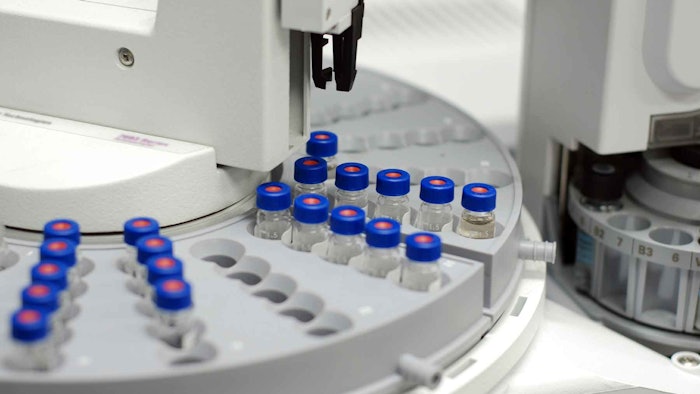
The state of New York passed laws that limit the ppm concentration of 1,4-dioxane in personal care, cosmetic and household products beyond "trace concentrations," according to legal firm JD Supra. Several additional states are enacting laws and regulations as well, since 1,4-dioxane is classified as a potential human carcinogen and its occurrence in local water supplies is a concern.
California's Office of Environmental Health Hazard Assessment, for example, identified the chemical as a risk to human health and lists a "safe harbor" requirement of 30 μg per day. Also, Oregon, Vermont and Washington prohibited the material from appearing in children's products.
The ingredient is often found in shampoo and soap, as well as household cleansers, dyes, paints and adhesives, and can be created as a byproduct of chemical reactions during production. In relation, a recent review published in the Journal of Surfactants and Detergents explores approaches to measure 1,4-dioxane levels in cleansers, to ensure product compliance.
See archived: PCPC/FDA Briefing: VOCs, CBD, PFAs, Talc and the Safe Cosmetics Act
Quantifying 1,4-dioxane
The review first assesses the methods used to quantify 1,4-dioxane in surface water and drinking water, then extends the assessment to more complex commercially available products. The advantages and disadvantages of different concentration approaches, such as headspace analysis, liquid-liquid and solid-phase extraction, purge-and-trap and solid-phase micro-extraction, were evaluated; see the full open access article for details.
Results indicated gas chromatography using conventional capillary columns and mass spectrometric detection, and the employment of an internal standard (particularly 1,4-dioxane-d8), is the best approach.
"We expect the regulation of 1,4-dioxane in consumer products will continue for the foreseeable future," JD Supra noted. "In the absence of federal regulation, state legislatures and agencies continue to focus on the presence of potentially harmful chemicals in consumer products to protect the health of consumers and water sources."
Industry Context
Update: In response to the described study, industry expert Tony O'Lenick recently lended some context.
"The [U.S. Food and Drug Administration] (FDA) states1 1,4-dioxane is a potential human carcinogen. A 2016 report by the Department of Health and Human Services National Toxicology Program (NTP) found that 1,4-dioxane is 'reasonably anticipated to be a human carcinogen based on sufficient evidence of carcinogenicity from studies in experimental animals,' although the data available from human epidemiological studies is not adequate to evaluate the relationship between human cancer and exposure to 1,4-dioxane. The U.S. Environmental Protection Agency (EPA) has classified 1,4-dioxane as 'likely to be carcinogenic to humans,' based on a finding of sufficient evidence of carcinogenicity in animals intentionally exposed to 1,4-dioxane but inadequate evidence of carcinogenicity in humans.
"The FDA has periodically monitored specific levels of 1,4-dioxane in cosmetic products since the late 1970s. From 1981 to 1997, 10 surveys were conducted on the amount of 1,4-dioxane in finished cosmetic products. Although these surveys examined a limited number of samples, the number of products containing levels of 1-4-dioxane greater than 10 parts per million (ppm) declined over this period. In 1981, an average of 50 ppm 1,4-dioxane was found in finished cosmetic products, with a range of 2 ppm-279 ppm; in 1997, the average was 19 ppm, with a range of 6 ppm-34 ppm.2
"In 2008, the FDA conducted an 11th survey using a new analytical method with a detection limit of 1 ppm. Results from this survey found that about 6% of the products were between 1 ppm-5 ppm; about 6% were between 5 ppm-10 ppm; about 8% were between 10 ppm-12 ppm (the highest level detected was 11.6 ppm); no 1,4-dioxane was detected in the majority (80%) of the products.3
"The New York legislature recently enacted amendments to Environmental Conservation Law (ECL) Article 35 and Article 37 to establish limits on the amount of 1,4-dioxane that can be present in household cleansing, personal care, and cosmetic products sold or offered for sale in New York State. The law established a maximum allowable concentration of 2 ppm of 1,4 dioxane on Dec. 31, 2022, and 1 ppm on Dec. 31, 2023, for household cleansing and personal care products. The law also established a maximum allowable concentration of 10 ppm of 1,4 dioxane on Dec. 31, 2022, for cosmetics."4
References
1. FDA. (Accessed 2023, Mar 13). 1,4-Dioxane in cosmetics: A manufacturing byproduct. Available at https://www.fda.gov/cosmetics/potential-contaminants-cosmetics/14-dioxane-cosmetics-manufacturing-byproduct
2. Black, R.E., Hurley, F.J and Havery, D.C. (2001). Occurrence of 1,4-dioxane in cosmetic raw materials and finished cosmetic products. J AOAC International. 84(3). pp. 666-667.
3. Chou, H.J., Wang, P.G., Zhou, W. and Krynitsky, A.J. (2010 Sep). Determination of 1,4-dioxane in cosmetic products. Poster session presented at 124th AOAC Annual Meeting. Sept. 26-29, Orlando, Fl
4. New York State. (Accessed 2023, Mar 13). 1,4-Dioxane limits for household cleansing, personal care and cosmetic products. Available at https://www.dec.ny.gov/chemical/121658.html










